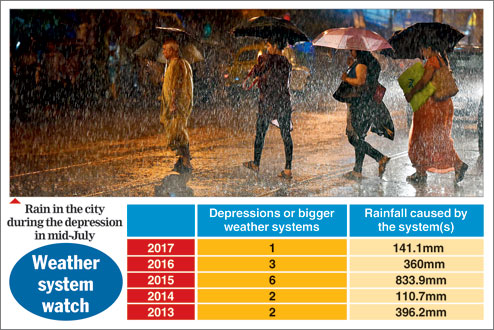
Sept. 13: A public health expert today fried the perception that hygiene is the main health compromise Calcuttans make every time they dig into a piece of tele bhaja or a piping-hot shingara straight from the pan.
Reuse of cooking oil to fry food can lead to the formation of cancer-causing compounds, a gathering of street vendors and food safety officers were told at a workshop.
This is a practice common to thousands of street vendors in this city that loves all things fried, from fish to fritters. Vendors never throw away the oil after frying something, they only add some more to make up for the quantity soaked by whatever was fried.
"Aldehydes form when the same cooking oil is reused and these are carcinogenic. Vegetable oils commonly used in cooking such as sunflower and corn oil will develop carcinogenic compounds after repeated use; so used oil should be thrown away," advised Sharmila Sanyal, professor at the All India Institute of Hygiene and Public Health.
She also stressed the need to preserve food at a proper temperature and consume it quickly.
The workshop had over 100 street vendors along with food safety officers of the Calcutta Municipal Corporation (CMC).
The usual practice at stalls selling fast food is to add fresh oil to the residual oil after a round of frying. A street food vendor in central Calcutta said he had been doing this ever since he could remember. The vendor sells about 500 shingaras and kachoris each every day. The large pan that he uses can hold about 30 shingaras at a time, which means he needs to fry 16 batches to meet his daily requirement.
"The practice of pouring more oil on the residual oil from the previous round of frying is a highly dangerous one," said another expert at the workshop, organised jointly by the CMC and the Bureau of Indian Standards (BIS).
Atin Ghosh, the mayoral council member for health in the CMC, said more such workshops would be held.
Preserving food at a particular temperature range is also critical to safety. "Any food that is served warm should be preserved at above 65 degrees Centigrade. Food served cold should be preserved at a temperature below 5 degrees Centigrade. Any temperature between 5 and 60 degrees is ideal for microbes to grow," Sanyal said.
Since most street-food vendors do not have a mechanism to preserve cooked food within this temperature range, experts suggest that the food be consumed within two hours of cooking. A vendor can heat the food again later to above 65 degrees Centigrade and this is safe to consume for two hours.
The BIS has revised its food safety guidelines, first issued in 2012, this year. "The civic body has to do the checking and then rate street vendors based on the guidelines," said Vishnu Gupta, deputy director general of the organisation's regional office.
During recent inspections by the CMC, street vendors were found lacking on several counts. Many vendors do not keep food covered, leaving it vulnerable to bacteria and other microbes. Some food samples were found to contain added colours and harmful chemicals.










